This article was co-authored by Claudia Carberry, RD, MS and by wikiHow staff writer, Jennifer Mueller, JD. Claudia Carberry is a Registered Dietitian specializing in kidney transplants and counseling patients for weight loss at the University of Arkansas for Medical Sciences. She is a member of the Arkansas Academy of Nutrition and Dietetics. Claudia received her MS in Nutrition from the University of Tennessee Knoxville in 2010.
There are 9 references cited in this article, which can be found at the bottom of the page.
This article has been viewed 38,007 times.
On average, Americans consume over 3,500 mg of sodium per day, which is well above the recommended 2,300 mg limit. Too much sodium in your diet can lead to high blood pressure and wreak havoc throughout your circulatory system, leaving you at higher risk for heart disease and stroke. For this reason, most people – particularly those living in North America and Europe – should take steps to limit sodium in their diets. To understand how much sodium you need to cut out, you must first calculate your salt intake. Salt intake can be a difficult thing to measure since most of the salt you consume each day comes from processed and restaurant foods, not salt you sprinkle on food for flavor.[1]
Steps
Estimating Your Salt Intake
-
1Keep a food diary. Make a record of everything you eat each day for at least a week. This will give you enough data that you can accurately estimate the amount of salt you're consuming on a regular basis.[2]
- Include the brand names of packaged food products you consume, as well as the type of food.
- Be honest with amounts you consume. It can help to weigh your food before you eat it, to make sure you're estimating the amount correctly. You also can measure the volume of bowls you commonly use, or use a measuring cup to get a better idea of the amount of food you're eating.
- Make sure you include snacks. Keeping a food diary, even on its own, can be a good way to cut back on mindless eating. For example, you'll probably find that you're less likely to keep munching on chips or cookies while watching television if you know you have to write it down in your food diary.
-
2Learn the difference between salt and sodium. While the words "salt" and "sodium" are often used interchangeably, they actually refer to two different substances. Salt itself is a chemical compound, of which sodium is only one part.[3]
- You'll typically see "sodium" on nutritional labels, but you may see "salt" in the list of ingredients.
Advertisement -
3Include table salt that you add to foods. Salt already included in processed foods and restaurant meals typically accounts for the vast majority of the salt you consume each day. However, that doesn't mean the salt you sprinkle on your food can add a lot of sodium to your daily intake.[4]
- The dash of salt you add to foods can be difficult to measure. You may want to consider tapping the same amount of salt you typically would add to a meal into a small measuring spoon so you can get a better idea.
- Think about the types of foods on which you typically sprinkle salt, and how many of these foods you eat in a typical day. You can use your food diary to help you with this. If you sprinkle salt on a dish, note that in your food diary so you remember to add that in later.
-
4Look for an online calculator. There are a number of calculators online that you can use to help estimate your salt intake. Look for a calculator that is operated by a healthcare provider or government agency, as these typically will be more reliable.[5]
- While there are general guidelines, the recommended amount of sodium you should consume will vary based on your age and gender. Online sodium calculators should take this into consideration. Some also may ask your height and weight to provide you with a more reliable estimate of the amount of sodium you're consuming.
- If you've kept a food diary, it will be an asset when providing information for an online calculator. You may want to read over the questions asked on the calculator first so you can go through your food diary and categorize the food you eat and more easily answer the questions.
- When you complete the calculator, it typically will give you an estimate of the amount of sodium you consume each day, as well as how this relates to the recommended level of sodium you should consume. Keep in mind that this is only an estimate, but it can help you adjust your diet.
Tracking Your Sodium Intake
-
1Plan your meals in advance. If you carefully plan what you're going to eat each day for a week, you can shop only for the ingredients in those meals. The planning makes it easier to track your sodium intake, because you won't have unknown items that you have to calculate after the fact.[6]
- You may have already started a food diary so you could estimate your salt intake. Continuing to use your food diary can make it easier to plan your meals and stick to that plan.
- It's a good idea to go through your fridge and pantry and get rid of snacks and high-sodium foods, so they won't tempt you. This is particularly important if you're trying to cut back on sodium in your diet.
-
2Inspect nutrition labels closely. On packaged and processed foods, you'll find a nutrition label that indicates the sodium content of an individual serving of that food product. Choose foods that are low in sodium or have no salt added.
- Keep in mind that different brands of the same food product may have different amounts of sodium. Generally, you want to choose the brand that has the lowest sodium.
- Frozen vegetables have lower sodium than canned vegetables, and many frozen vegetables may have no sodium at all.
- Watch out for sodium particularly in foods that you normally wouldn't consider salty, such as bread, rolls, and cookies. Salt often is used as a preservative, and is used in baked goods as well.
- Some countries, such as the United Kingdom, mandate color-coded labels to help you choose low-sodium foods. If you live in such a country, look for labels with a color that corresponds with the lowest levels of sodium.[7]
-
3Measure proper portions. Nutrition labels provide sodium content for packaged food products based on individual serving sizes. To adequately and correctly track your salt intake, you must ensure you're eating no more than a single portion.[8]
- The amount of food that is considered an individual serving will be listed on the nutrition label. Use a measuring cup, measuring spoon, or a food scale to determine how much food equals a serving. You can also estimate the portion sizes of certain foods.
- The sodium content listed on the box is the content for a single serving. If you eat more than 1 serving, you need to multiply that amount by the number of servings you've consumed.
- For example, if the bowl of cereal you normally eat for breakfast actually equates to 2 individual servings, you would need to multiply the sodium amount on the cereal box's nutritional label by 2.
-
4Total sodium for ingredients. Sodium can sneak into meals you make at home, even if you don't add salt specifically. Make sure you've determined the sodium content for all the various ingredients in a recipe so you can account for it properly.[9]
- If you've purchased whole foods that didn't come in a package with a nutritional label, you may have to do additional research online to determine the sodium content of that food.
- When you total the sodium for ingredients in an entire recipe, don't forget to divide by the number of servings. For example, if you made a casserole and ate 1/4 of it, you would take the total amount of sodium included in the casserole's ingredients and divide by 4 to find your personal sodium intake.
- Don't forget to include any table salt, garlic salt, onion salt, or any other seasonings you use in the recipe that contain sodium, or that you sprinkle on the food before you eat it.
-
5Use your sodium numbers to calculate your salt intake. While you may be able to track the exact amount of sodium you consume, you'll have to go 1 step further if you also want to find out exactly how much salt you're consuming.[10]
- Generally, you probably want to track your sodium intake for at least a week. Get your sodium total, then divide by 7 to get your average daily sodium intake. This will be a more accurate number than if you simply track your sodium intake for 1 day.
- Once you have your daily sodium intake number, multiply that number by 2.5. The result is your salt intake.
Eating Less Salt
-
1Eat more whole foods. You can better control your salt intake by purchasing whole foods at the grocery store, rather than eating packaged or processed food products, or frequently eating out at restaurants.[11]
- With packaged and processed foods, you can't do anything about the sodium the company adds to the food product. However, if you make the same thing yourself using whole foods, you have the opportunity to reduce or even eliminate salt.
- Another benefit of whole foods is that they tend to be cheaper than packaged and processed foods, so ultimately you may see a decrease in your grocery bill.
- When you make your grocery trip, shop the perimeter of the store first. This is typically where the produce, meats, and dairy are located. When you shop the aisles, start with the outer aisles and work your way in.
-
2Focus on bread, soups, and sandwiches. Commercial breads, canned soups, and cold cuts are some places where sodium will sneak into your diet, even if the foods you're eating don't taste particularly salty.[12]
- You may have difficulty if you try to eliminate or significantly reduce the amount of salt in your diet all at once. Your taste buds have become accustomed to it, and you may initially find foods bland or even distasteful. It takes time for your taste buds to adjust to less salt.
- Canned soups and sandwiches are some of the most common foods that sneak in significant amounts of sodium into your diet. A single bowl of soup or a sandwich made with cold cuts may contain as much sodium as you're supposed to consume in an entire day.
- If you regularly eat canned soups, look for those that have no salt added, or that indicate they are low-sodium on the front of the label. Typically the low-sodium banner will be green. In most grocery stores, the low-sodium versions of popular soups can be found alongside that brand's other soups, for roughly the same price.
- You also can easily find soup recipes online or in a cookbook that are made using whole food ingredients. Make your soup in large batches and freeze the excess so you can enjoy it for a longer period of time.
- Rather than buying packaged cold cuts, get meats that haven't been processed and slice your own, or get fresh-sliced meat from the deli for your sandwiches. It typically will be a little more expensive, and won't keep as long, but it will have significantly less sodium.
-
3Cook your own meals. Most people rely on packaged food products because they're more convenient when you have heavy demands on your daily schedule from work or school. You can ease this issue by planning and preparing your meals in advance.
- Cooking in advance not only will help you track and control your salt intake, it also helps with portion control.
- Pick 3 or 4 recipes you like and purchase the ingredients. Then spend an afternoon making those dishes. You can freeze individual portions to eat throughout the week. Remember to invest in some freezer-friendly containers that hold individual portions.
-
4Increase your intake of potassium. Potassium helps to counter the effects of sodium, so increasing your potassium intake can decrease the negative effects of salt in your diet. The 2 minerals work together to support cellular function and help keep your body hydrated.[13]
- Try to include a potassium-rich food with every meal, and you'll be well on your way to reaching the recommended daily intake. You also may want to take a potassium supplement.
- Avocados have the most potassium of any food, with a whopping 1068 milligrams per whole avocado. That represents approximately 30 percent of the total recommended potassium intake for an adult.
- Vegetables that are high in potassium include spinach, sweet potatoes, acorn squash, and mushrooms.
- Bananas and apricots also contain significant amounts of potassium. Just one large banana provides as much as 12 percent of your recommended daily intake of potassium.
- You also can find potassium in coconut water, and in kefir or yogurt.
Salt Intake Calculator and Low and High-Salt Foods
Expert Q&A
-
QuestionWhat foods can you eat on a low sodium diet?
 Claudia Carberry, RD, MSClaudia Carberry is a Registered Dietitian specializing in kidney transplants and counseling patients for weight loss at the University of Arkansas for Medical Sciences. She is a member of the Arkansas Academy of Nutrition and Dietetics. Claudia received her MS in Nutrition from the University of Tennessee Knoxville in 2010.
Claudia Carberry, RD, MSClaudia Carberry is a Registered Dietitian specializing in kidney transplants and counseling patients for weight loss at the University of Arkansas for Medical Sciences. She is a member of the Arkansas Academy of Nutrition and Dietetics. Claudia received her MS in Nutrition from the University of Tennessee Knoxville in 2010.
Master's Degree, Nutrition, University of Tennessee Knoxville Master's Degree, Nutrition, University of Tennessee KnoxvilleExpert AnswerFresh fruits, vegetables, whole grains, and lean meat are acceptable. Avoid adding any form of salt or sodium to your food.
Master's Degree, Nutrition, University of Tennessee KnoxvilleExpert AnswerFresh fruits, vegetables, whole grains, and lean meat are acceptable. Avoid adding any form of salt or sodium to your food.
Warnings
- Check with your doctor before using salt substitutes that contain potassium chloride. Consuming high levels of potassium can be dangerous if you have kidney disease or if you are taking medication for your heart, liver, or kidneys. Your body might not be able to process the extra sodium and this may endanger your life.[14]⧼thumbs_response⧽
References
- ↑ https://www.npr.org/sections/health-shots/2021/10/13/1045651839/eating-too-much-salt-is-making-americans-sick-even-a-12-reduction-can-save-lives
- ↑ https://www.heart.org/en/healthy-living/healthy-eating/eat-smart/sodium/how-to-track-your-sodium
- ↑ https://www.hsph.harvard.edu/nutritionsource/salt-and-sodium/
- ↑ https://www.cdc.gov/salt/
- ↑ https://www.projectbiglife.ca/sodium/
- ↑ https://www.fda.gov/food/nutrition-education-resources-materials/sodium-your-diet
- ↑ http://www.nhs.uk/Livewell/Goodfood/Pages/salt.aspx
- ↑ https://www.heart.org/en/healthy-living/healthy-eating/eat-smart/sodium/how-to-track-your-sodium
- ↑ https://www.heart.org/en/healthy-living/healthy-eating/eat-smart/sodium/how-to-track-your-sodium
- ↑ http://www.nhs.uk/Livewell/Goodfood/Pages/salt.aspx
- ↑ https://www.fda.gov/food/nutrition-education-resources-materials/sodium-your-diet
- ↑ https://www.npr.org/sections/health-shots/2021/10/13/1045651839/eating-too-much-salt-is-making-americans-sick-even-a-12-reduction-can-save-lives
- ↑ https://www.cdc.gov/salt/potassium.htm
- ↑ http://my.clevelandclinic.org/health/articles/salt-substitutes-heart-health
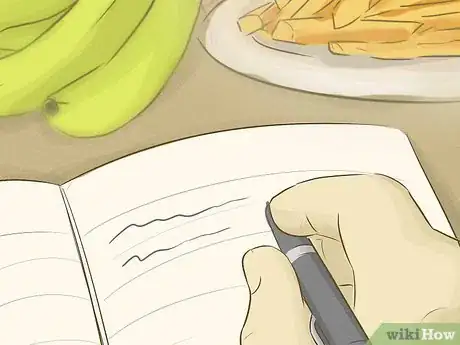
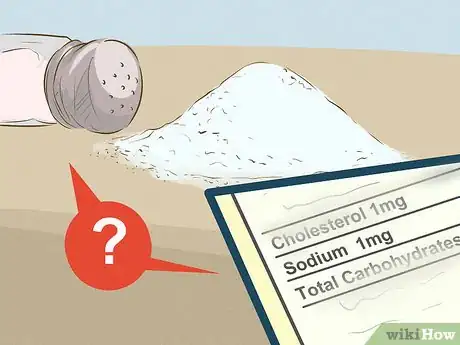
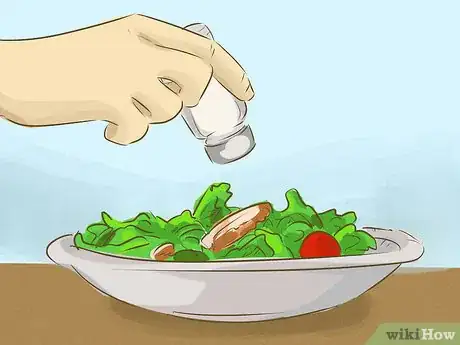
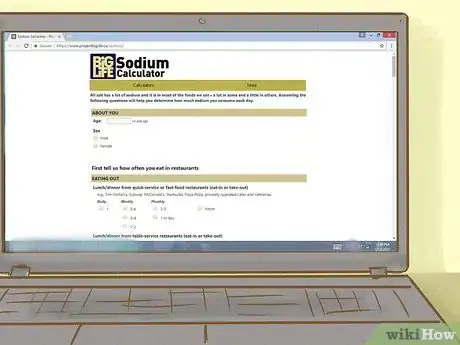
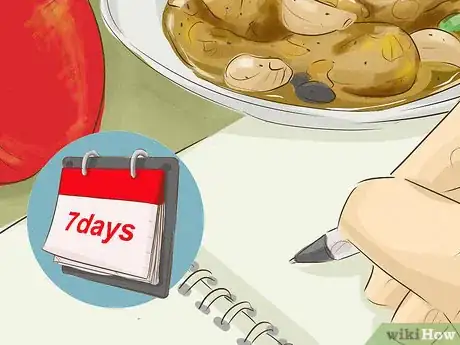
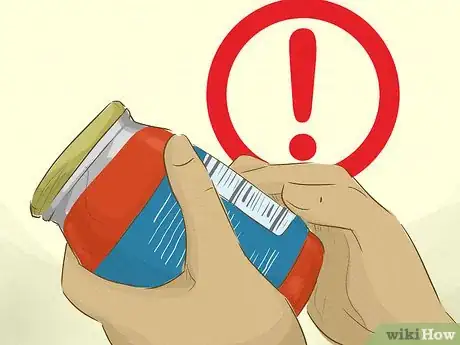
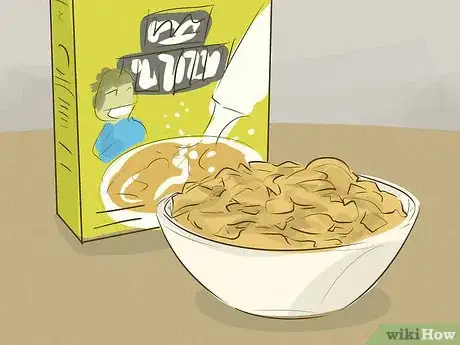
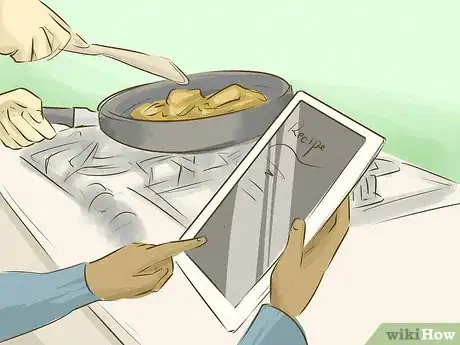
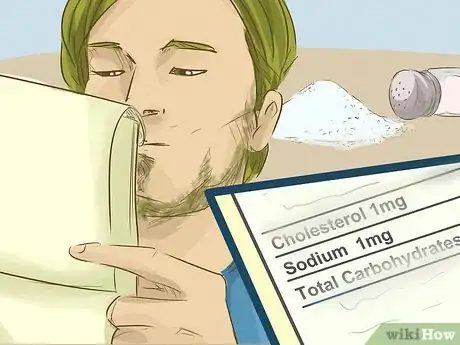
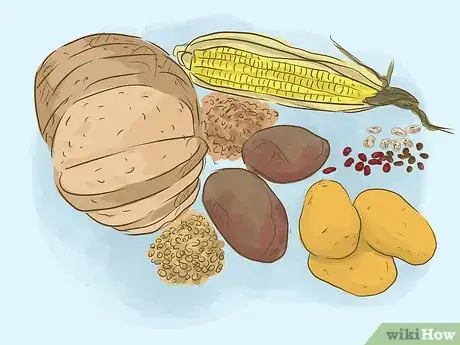
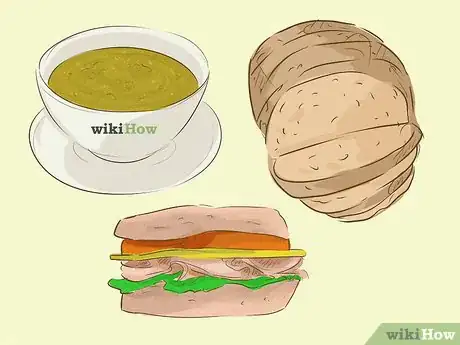
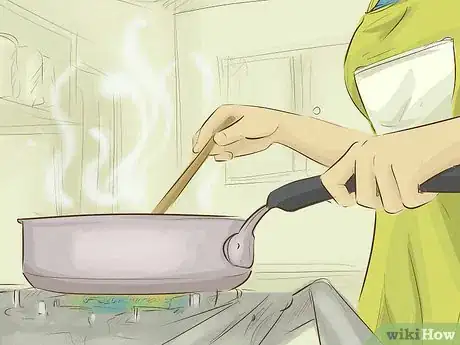
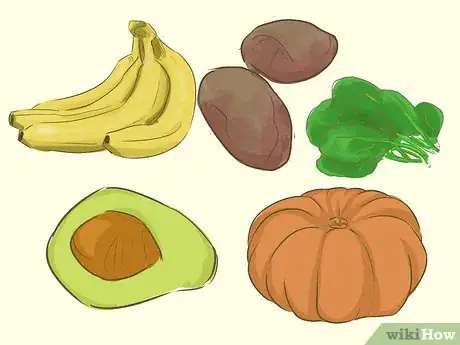
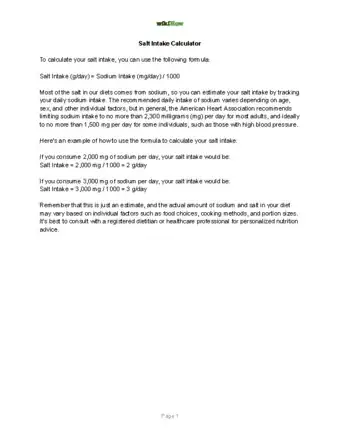
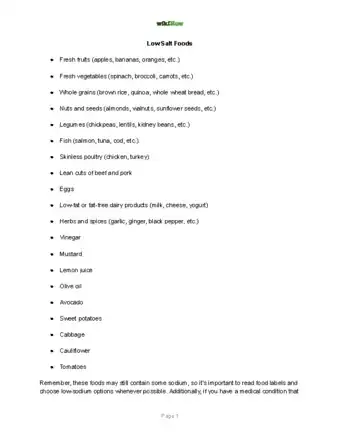
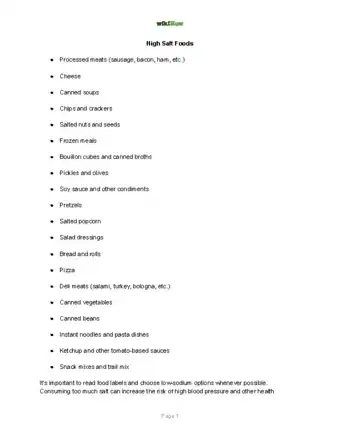
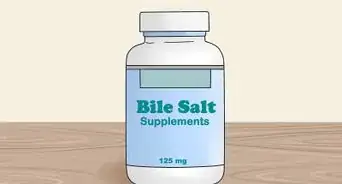
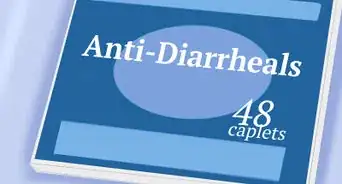
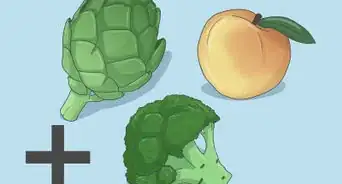
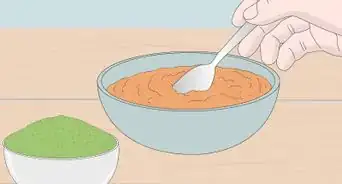
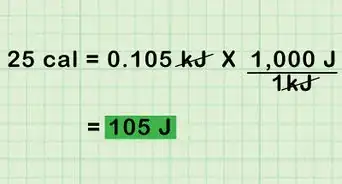
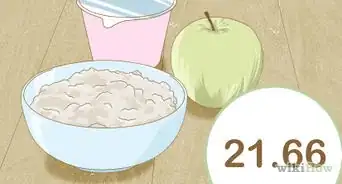
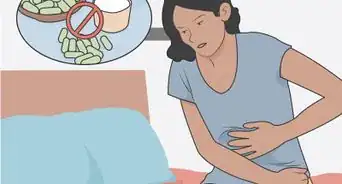





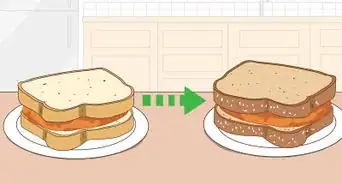







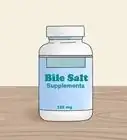
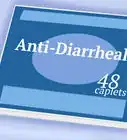

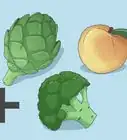




































Medical Disclaimer
The content of this article is not intended to be a substitute for professional medical advice, examination, diagnosis, or treatment. You should always contact your doctor or other qualified healthcare professional before starting, changing, or stopping any kind of health treatment.
Read More...